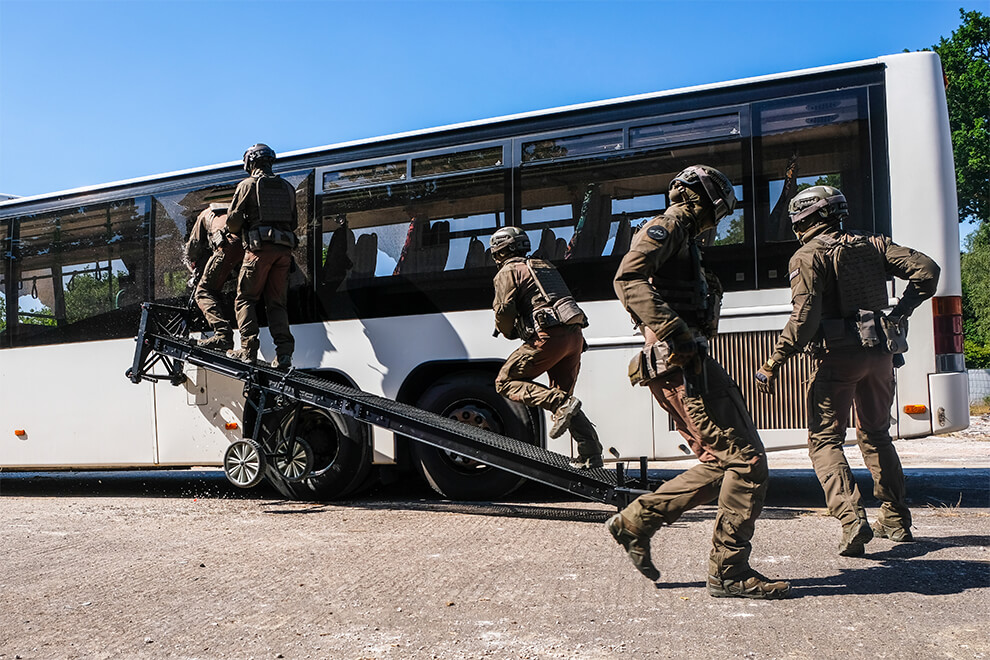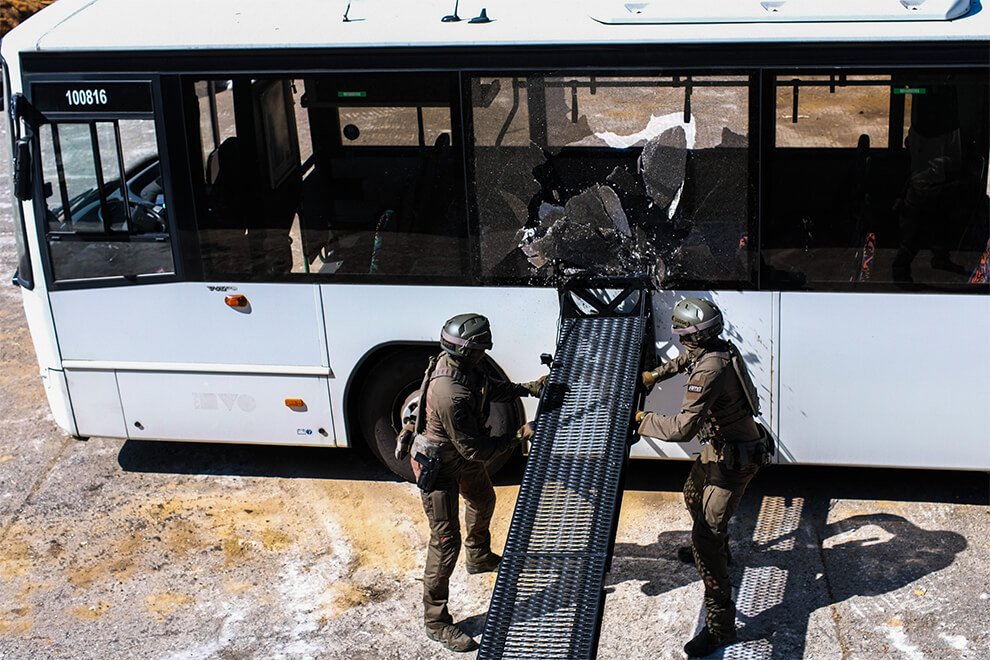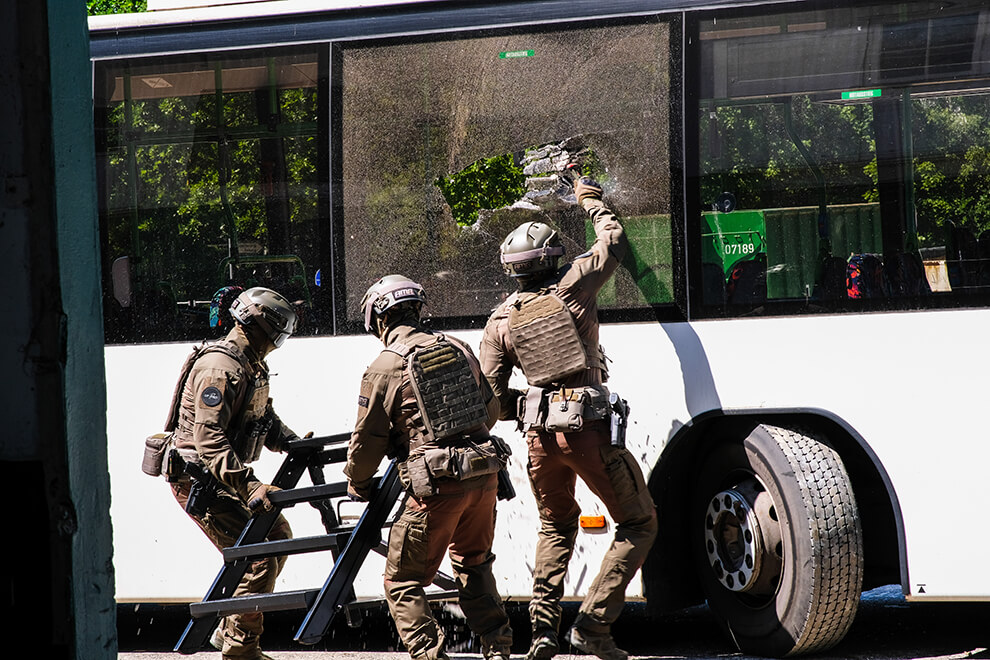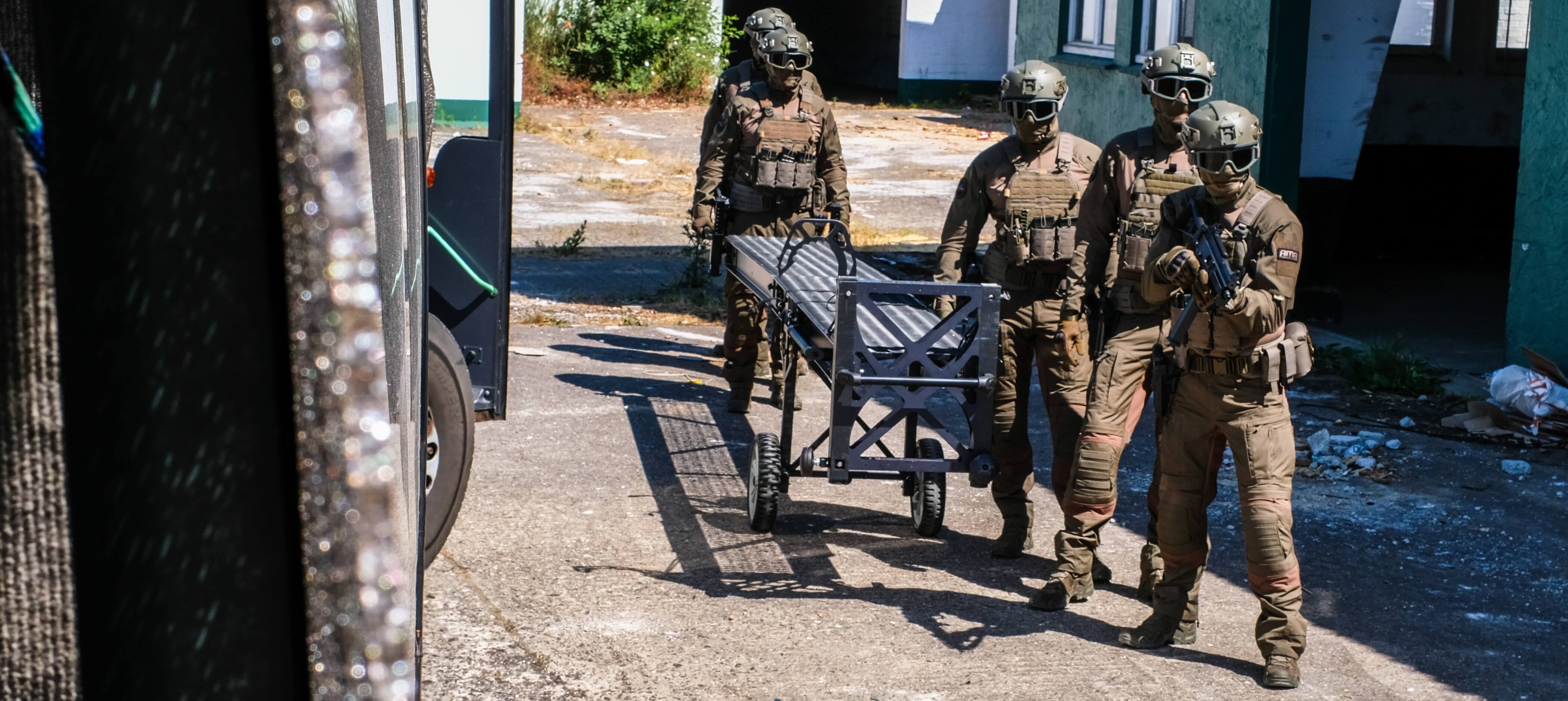You’ve got a bus surrounded. Hostages are being held inside, behind doors locked tight. Negotiations with the hostage-taker are going nowhere. This is a high-pressure situation, absolutely. But the only way to tilt the odds in your favour now is to breach that vehicle—and to do that is going to require speed, efficiency, and precision. Here, timing is everything, just as it is in any mission deemed critical. It will as in those other missions spell the difference between success and failure, between lives saved and threats neutralised.
In this blog post:
Introduction
In this blog, we will explore the intricacies of dynamic entry into locked buses and the challenging complexities associated with this high-stakes manoeuvre. As well, we will focus on task force-approved recommendations for choosing the best tools and tactics to help you successfully accomplish the mission.
Most Frequently Used Breaching Methods
There are four widely employed approaches to getting inside a locked bus. Each has its advantages and disadvantages.
They are:
- Parallel Approach with Breaching Ramp
- Parallel Approach with Trestle
- Direct (or Perpendicular) Approach with Breaching Ramp
- Direct Approach with Trestle
We’ll consider them, one by one. At the end, we’ll wrap up this discussion by telling you which of the four we believe should be the go-to choice (unless the unique factors of the situation indicate another of the four options would serve you better).
Let’s review them.

‘Parallel Approach with Breaching Ramp’
Imagine a gambit in which the glass of the bus’s inward-swinging pneumatically operated glass door is shattered and then multiple personnel rush in like a well-choreographed symphony. That pretty much describes the Parallel Approach with Breaching Ramp. This method facilitates lightning-fast setup and equally swift penetration.
It works like this. You approach the locked bus and, as you draw near, you array your forces in a line of attack that runs parallel to the side of the vehicle. This parallel positioning places you at an angle advantageous for deployment of the breaching ramp.
Additionally, the breaching ramp serves as a reliable tool for smoothing out uneven terrain and providing a stable platform for a flawless operation. Once the glass door shatters and the path clears, the team surges into the bus. The baddies are caught off-guard and you’re able to quickly establish control of the situation.
However, this plan—like every other—has its limitations. The Parallel Approach with Breaching Ramp requires significant side space. That means it’s less feasible for use in cramped environments, such as those found in urban settings and, particularly, on narrow or dead-end streets and alleys. Also, the breaching ramp during deployment may momentarily obstruct your line of sight, so if you’re hoping to make a direct sightline entry into the bus, this method might not be the optimal choice.

‘Parallel Approach with Trestle’
Stealth and surprise are hallmarks of the Parallel Approach with Trestle. With this method, your team surreptitiously sets up, leaving your targets blissfully unaware and then—when at last you strike—frozen like deer in an automobile’s high-beam headlamps.
The key piece of equipment employed in this method is a small trestle, which you position against the side of the bus to permit entry through the windows (after they’re shattered, of course). Owing to the compact design of the trestle, this highly versatile approach shines when used in situations where the bus is parked on a narrow street, in an alley, or other urban setting where there is limited side space available (proof that no nook or cranny is beyond your reach). If you’re working in tight spaces while trying to avoid notice until the last possible instant, the Parallel Approach with Trestle makes a great deal of sense.
Still, stealth comes at a price. Central to success is maintaining the element of surprise. But, at some point before entering you’re going to have to smash glass. The noise of that breakage will alert the bad guys in or near the bus. Hence, the importance of swift and precise execution on your part. Tightly coordinated, a sudden breach can minimise the ability of your adversaries to react—either by drawing their weapons or summoning backup or both.

‘Direct Approach with Breaching Ramp’
Also known as the Perpendicular Approach with Ramp, this method’s biggest advantage is direct sightline access. Specifically, it lets you thoroughly assess the situation that exists inside the bus before you attempt to breach. Unless the targets have in some way blacked out the windows, you should be able to observe where your adversaries are positioned in relation to the doors, windows, seats, and hostages. You also should be able to get a sense of the types and numbers of weapons the targets have brought aboard. All of this is invaluable pre-assault intelligence.
The ramp used in this approach accomplishes two things. First, it provides a stable platform for entry. Second, it compensates for uneven terrain. Together, these make this method a good choice for use in off-road environments and in places where landslides are known to happen.
The primary drawback to the Direct Approach with Breaching Ramp is it requires more space than the parallel version of this method. Accordingly, it is most successful when employed in situations that transpire out in the open, in uncrowded urban locales, and in other settings where there’s ample room for setting up and manoeuvring.
Another shortcoming is the need for stealth—utmost stealth—leading up to the assault. Because the approach line leads directly to the bus, there exists a very real possibility that you’ll lose the element of surprise. The only way to mitigate the risk of premature detection is to meticulously coordinate the set up and its timing.

‘Direct Approach with Trestle’
All the advantages of the Direct Approach with a Breaching Ramp are present in this method. The main difference is you use the Direct Approach with Trestle when you decide to go in through the windows rather than through the door. As with the former-discussed method, it works well in situations calling for quick thinking and seamless execution. Importantly, the Direct Approach with Trestle doesn’t hold you back from executing agile manoeuvres that allow you to turn constraints into opportunities for tactical advantage.
Still, this method is no panacea. Among its deficiencies is the trestle requires a level surface for setup. That means it’s difficult to use in off-road environments dominated by soft or rock-strewn uneven surfaces—as well as on flat, hard city streets if there are potholes everywhere about. Not that it’s an impossibility to use this method in those situations, but setup will take longer and that’s potentially very problematic because rarely is time a luxury you possess.

Conclusion
Stacked side by side for comparison, the Parallel Approach with Breaching Ramp emerges as the crème de la crème of the four dynamic-entry-into-a-locked-bus methods we’ve discussed. The Parallel Approach with Breaching Ramp tops the list because it so effectively enhances assault team speed and precision, thereby reducing the risk of harm to hostages and rescuers alike. Moreover, the breaching ramp provides a sturdy platform upon which the advancing strike team may nimbly tread, whether they must mount their assault on flat, solid asphalt or on wet, miry clay.
This versatile approach shines in urban and backwoods environments and every place in between. For that and all the reasons listed above, we believe the Parallel Approach with Breaching Ramp deserves its reputation as an indispensable tactic. It’s the go-to action when time is of the essence and lives are at stake.




